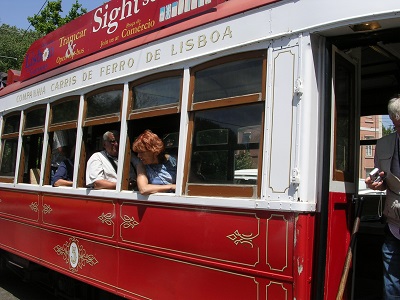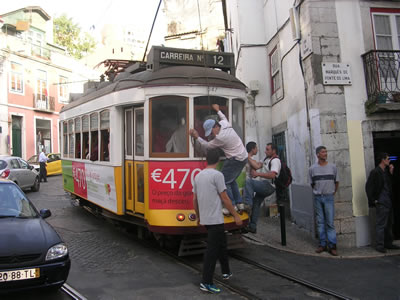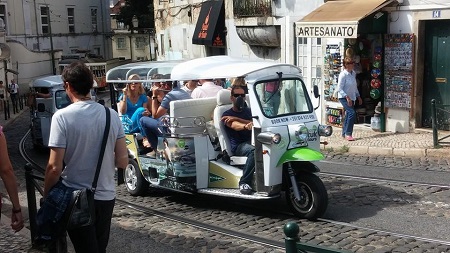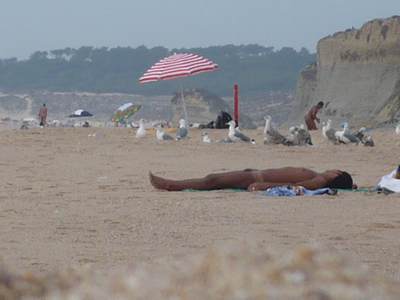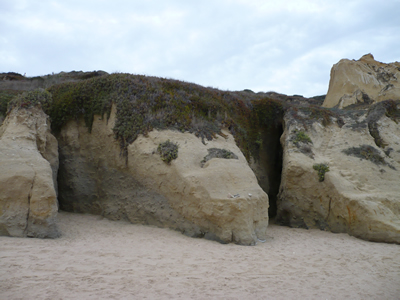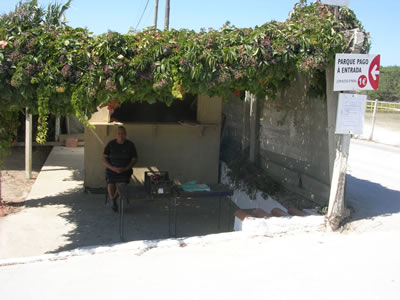Caldeirada, a traditional Portuguese fish stew, can consist of seafood (caldeirada de marisco), salted codfish (caldeirada de bacalhao) or any fish of your choice.
We’ll concentrate on making a ‘caldeirada de peixe’ (plain fish) and we’ll use some nice fresh douradas. As we cook for 4 persons we’ll take 4 large douradas, or 8 smaller ones.

When actually cooking in Lisbon go out to the big market (near to Lisbon’s major railway station and ferry terminal Cais do Sodré ), Mercado da Ribeira . A kilo of douradas shouldn’t cost more then 7/8 euros, depending on the quality. Look for fish with shiny eyes and gills that are still red on the inside.
Other ingredients you need:
- 4 large potatoes
- 4 cloves of garlic
- 1 large onion
- 3 large tomatos
- 1 red and 1 greene pepper
- Olive oil
- White wine
- Sea salt
- Coriander
Preparation
Take a large pot, cut the fish into big lumps (including the heads, tails and bones, don’t throw away the good parts). Cut the potatoes, tomatoes, garlic and onions into thin slices, cut the peppers into cubes.
Drizzle some olive oil in the pan and start ‘building up’ the caldeirada. Place the slices of potatoes in the pot, the slices of tomato, the peppers, garlic and onion and finally a third of the fish, some sea salt and coriander. Then start with the second layer, repeating the entire process untill all ingredients are used up. Top with some extra sea salt, coriander, olive oil and white wine.
Don’t save on the olive oil, cooking the caldeirada in oil gives it the rich typical taste.
Place the (closed) pot on a low fire, and let the caldeirada simmer ‘till all the ingredients are cooked (about 45 minutes/ one hour). Serve with bread olives and ice cold ‘vinho verde’ or white wine.

































